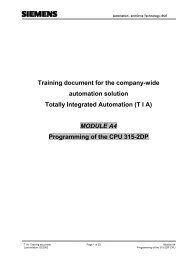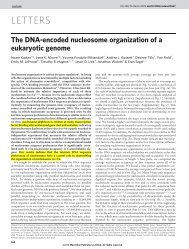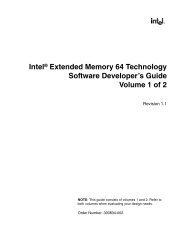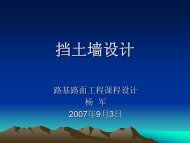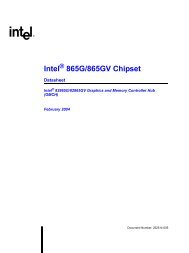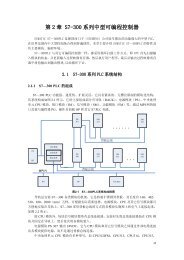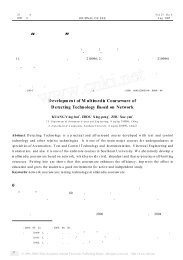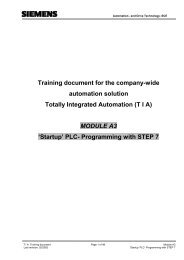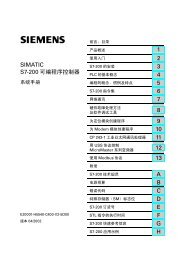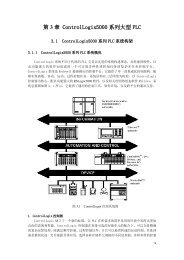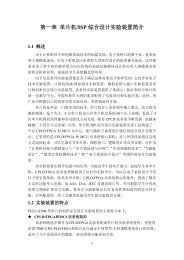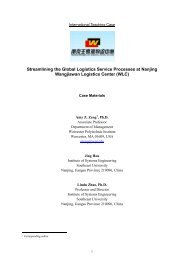Intel Pentium III Processor for the SC242 at 450 MHz to 1.0 GHz
Intel Pentium III Processor for the SC242 at 450 MHz to 1.0 GHz
Intel Pentium III Processor for the SC242 at 450 MHz to 1.0 GHz
Create successful ePaper yourself
Turn your PDF publications into a flip-book with our unique Google optimized e-Paper software.
Signal Quality Specific<strong>at</strong>ions3.2 AGTL+ and Non-AGTL+ Overshoot/UndershootSpecific<strong>at</strong>ions and Measurement GuidelinesOvershoot/Undershoot is <strong>the</strong> absolute value of <strong>the</strong> maximum voltage differential across <strong>the</strong> inputbuffer rel<strong>at</strong>ive termin<strong>at</strong>ion voltage (VTT). The overshoot/undershoot guideline limits transitionsbeyond VTT or VSS due <strong>to</strong> <strong>the</strong> fast signal edge r<strong>at</strong>es. The processor can be damaged by repe<strong>at</strong>edovershoot/undershoot events on 1.5 V or 2.5 V <strong>to</strong>lerant buffers if <strong>the</strong> charge is large enough (i.e., if<strong>the</strong> overshoot/undershoot is gre<strong>at</strong> enough). Determining <strong>the</strong> impact of an overshoot/undershootcondition requires knowledge of <strong>the</strong> Magnitude, <strong>the</strong> Pulse Dur<strong>at</strong>ion, and <strong>the</strong> Activity Fac<strong>to</strong>r.When per<strong>for</strong>ming simul<strong>at</strong>ions <strong>to</strong> determine impact of overshoot/undershoot, ESD diodes must beproperly characterized. ESD protection diodes do not act as voltage clamps and will not provideovershoot/undershoot protection. ESD diodes modeled within <strong>the</strong> <strong>Intel</strong> provided <strong>Intel</strong> ® <strong>Pentium</strong> ®<strong>III</strong> <strong>Processor</strong> I/O Buffer Models do not clamp overshoot/undershoot and will yield correctsimul<strong>at</strong>ion results. If o<strong>the</strong>r I/O buffer models are being used <strong>to</strong> characterize <strong>Pentium</strong> <strong>III</strong> processorper<strong>for</strong>mance, care must be taken <strong>to</strong> ensure th<strong>at</strong> ESD models do not clamp extreme voltage levels.The <strong>Intel</strong>-provided <strong>Pentium</strong> ® <strong>III</strong> <strong>Processor</strong> I/O Buffer Models also contains I/O capacitancecharacteriz<strong>at</strong>ion. There<strong>for</strong>e, removing <strong>the</strong> ESD diodes from <strong>the</strong> I/O buffer model will impactresults and may yield excessive overshoot/undershoot.3.2.1 Overshoot/Undershoot MagnitudeOvershoot/Undershoot Magnitude describes <strong>the</strong> maximum potential difference between a signaland its voltage reference level, VSS (overshoot) and VTT (undershoot). While overshoot can bemeasured rel<strong>at</strong>ive <strong>to</strong> VSS using one probe (probe <strong>to</strong> signal - GND lead <strong>to</strong> VSS), undershoot must bemeasured rel<strong>at</strong>ive <strong>to</strong> VTT. This could be accomplished by simultaneously measuring <strong>the</strong> VTT planewhile measuring <strong>the</strong> signal undershoot. The true wave<strong>for</strong>m can <strong>the</strong>n be calcul<strong>at</strong>ed by <strong>the</strong>oscilloscope itself or by <strong>the</strong> following oscilloscope d<strong>at</strong>e file analysis:Converted Undershoot Wave<strong>for</strong>m = VTT – Signal_measuredNote:Note:The Converted Undershoot Wave<strong>for</strong>m appears as a positive (overshoot) signal.Overshoot (rising edge) and undershoot (falling edge) conditions are separ<strong>at</strong>e and <strong>the</strong>ir impactmust be determined independently.After <strong>the</strong> conversion, <strong>the</strong> Undershoot/Overshoot Specific<strong>at</strong>ions (Table 20 through Table 22) can beapplied <strong>to</strong> <strong>the</strong> Converted Undershoot Wave<strong>for</strong>m using <strong>the</strong> same Magnitude and Pulse Dur<strong>at</strong>ionSpecific<strong>at</strong>ions (Table 20 through Table 22) as with an overshoot wave<strong>for</strong>m.Overshoot/undershoot magnitude levels must observe <strong>the</strong> Absolute Maximum Specific<strong>at</strong>ions(Table 20 through Table 22). These specific<strong>at</strong>ions must not be viol<strong>at</strong>ed <strong>at</strong> any time regardless ofbus activity or system st<strong>at</strong>e. Within <strong>the</strong>se specific<strong>at</strong>ions are threshold levels th<strong>at</strong> define differentallowed Pulse Dur<strong>at</strong>ions. Provided th<strong>at</strong> <strong>the</strong> magnitude of <strong>the</strong> overshoot/undershoot is within <strong>the</strong>Absolute Maximum Specific<strong>at</strong>ions, <strong>the</strong> impact of <strong>the</strong> Overshoot/Undershoot Magnitude may bedetermined based upon <strong>the</strong> Pulse Dur<strong>at</strong>ion and Activity Fac<strong>to</strong>r.D<strong>at</strong>asheet 41



